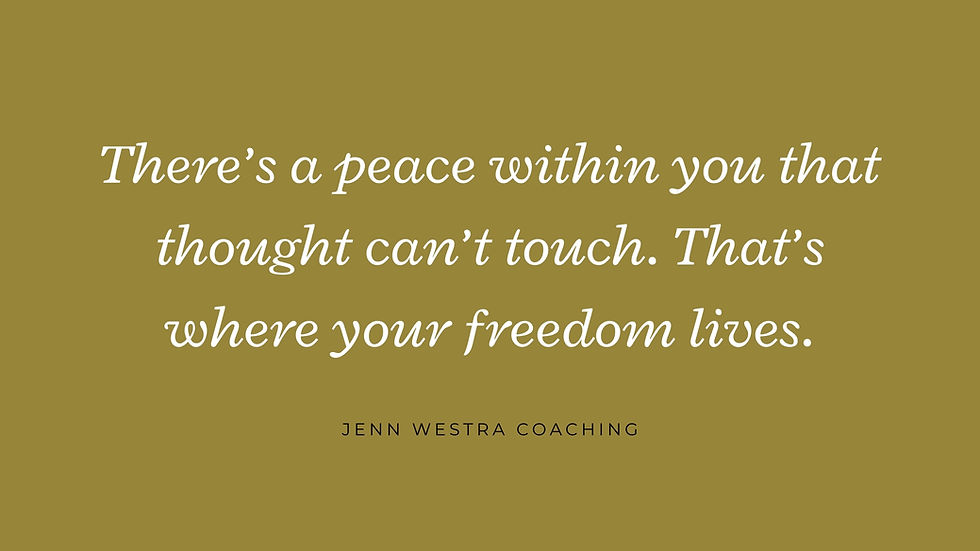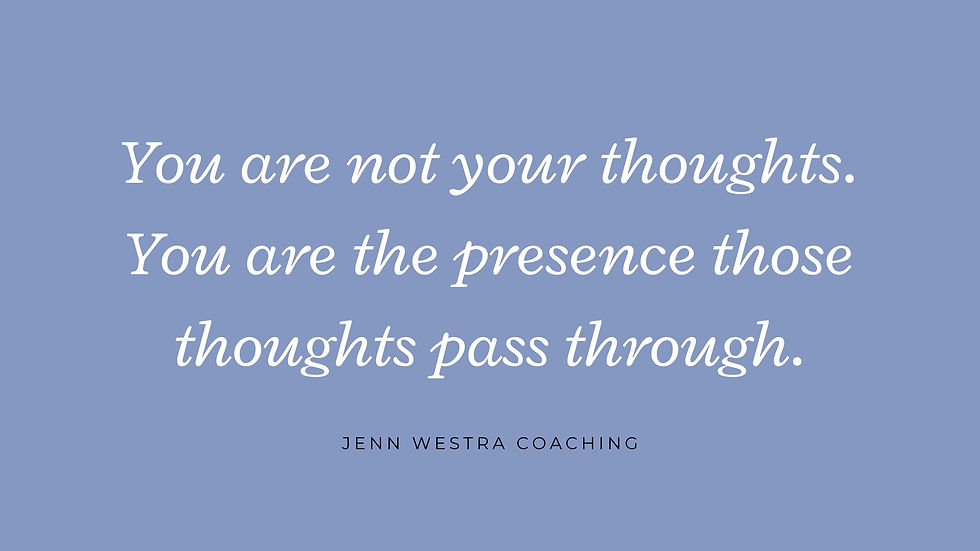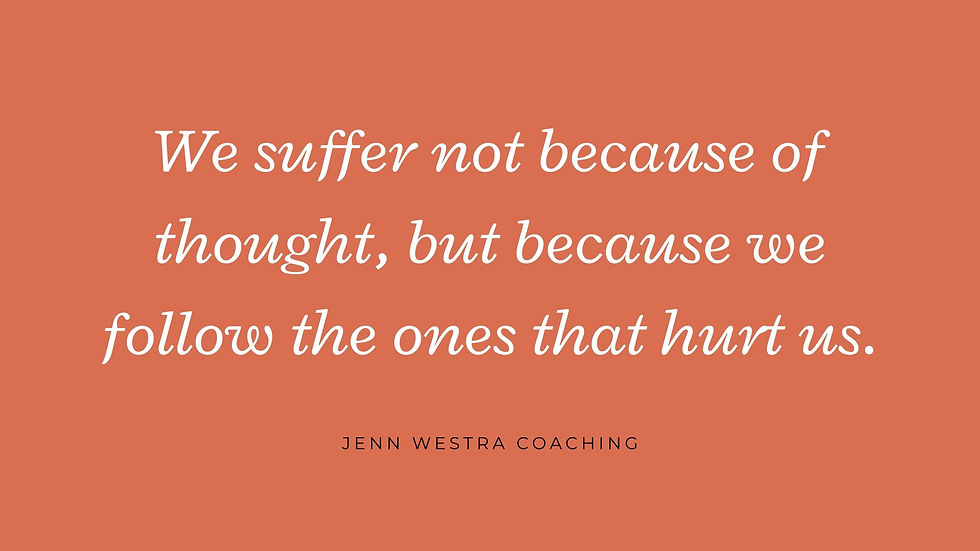People Are Struggling—When They Don’t Have To
- Jennifer Westra
- Aug 15
- 3 min read
Updated: Aug 31

People Are Struggling—When They Don’t Have To
There’s so much quiet suffering in the world.
People are walking around with heavy hearts, spinning thoughts, and deep feelings of anxiety, shame, overwhelm, and confusion. They’re trying hard to hold it all together. And many of them don’t realize:
It doesn’t have to be this way.
Not because life won’t be hard sometimes. Not because pain isn’t real. But because so much of our suffering is perpetuated—not by circumstance—but by the way we think about it.
Suffering Compounds in the Mind
There’s the initial pain of an event, loss, or moment—and then there’s everything we add to it. The analysis. The self-blame. The what-ifs. The catastrophic stories. The hopeless predictions. The spinning.
And the more we engage with those thoughts, the more deeply we suffer.
It’s like picking up a heavy backpack—and then adding rocks to it with every thought we latch onto. We carry it day after day, not realizing that we’re the ones tightening the straps.
But when we see how suffering is created and sustained in the mind, something loosens. A little space opens. We begin to experience the pain without the extra weight. And often, we begin to heal.
Suffering Isn’t Proof of Who You Are
It’s easy to take suffering personally. To believe it means you’re broken, weak, or fundamentally flawed. But that’s not true.
What’s true is that you’re feeling your thinking in real time. And if your thinking is harsh, scared, judgmental, or overwhelmed—you’ll feel that.
It doesn’t mean anything about you. It’s not a life sentence. It’s not a diagnosis. It’s a moment of experience—created by thought and felt in your body.
And the moment your thinking clears, even just a little, your experience changes. Your perspective softens. Your mind opens.
It’s not willpower or strategy that does that. It’s the nature of how consciousness works.
The More You Perpetuate, the More You Experience
Here’s the part that’s hard to see when you’re in the middle of it: the more you engage with suffering thought, the more you experience the feeling of suffering.
That doesn’t mean you’re doing something wrong. It just means that thought is powerful. It generates feeling. And when we keep reactivating painful thoughts—out of habit, fear, or confusion—we keep feeling them.
It’s like replaying a sad movie on a loop and wondering why you feel so heavy. It’s not a mystery. It’s the design.
But the good news is—you can stop the loop. You don’t need to solve the movie or rewrite the script. You can simply press pause.
And in that pause, your mind begins to quiet. You return to presence. You reconnect with the part of you that’s not suffering—because it was never created by thought in the first place.
There’s Another Way
This isn’t about denying pain or pretending things are okay when they’re not. It’s about understanding the source of suffering—and seeing that most of it isn’t coming from life itself, but from how we think about life.
You still get to feel. You still get to cry. You still get to be human. But you don’t have to live in the loop. You don’t have to keep adding thought to pain and calling it truth.
You can have the experience without building the narrative.
You can suffer less, not by doing more—but by understanding more.
That’s freedom. That’s peace. And it’s available, even in the middle of a hard day.




Comments